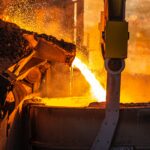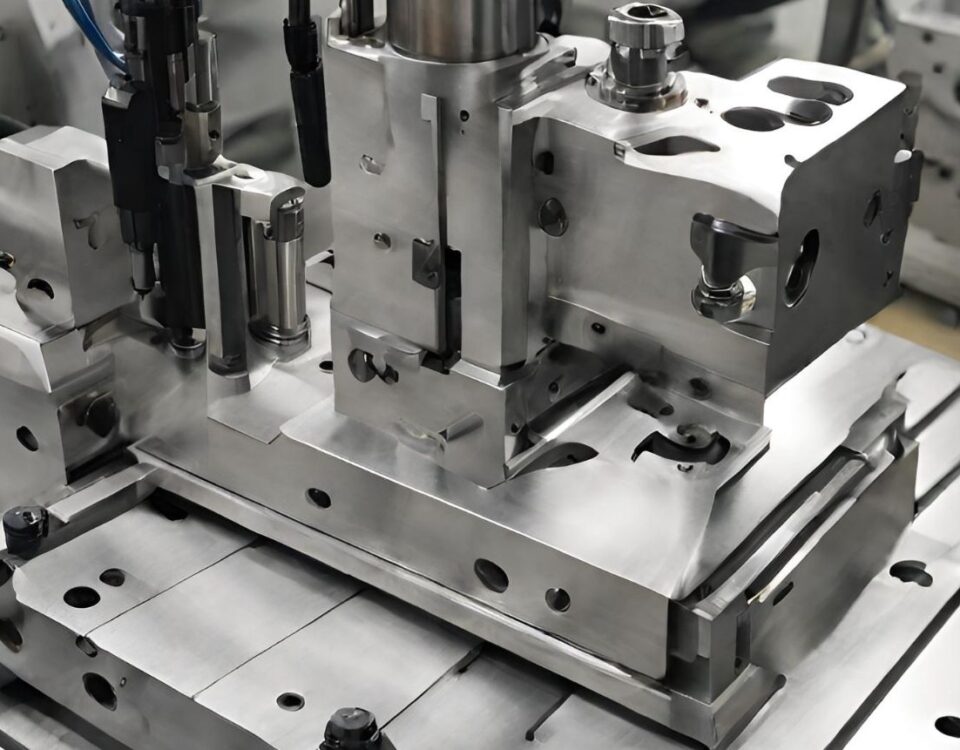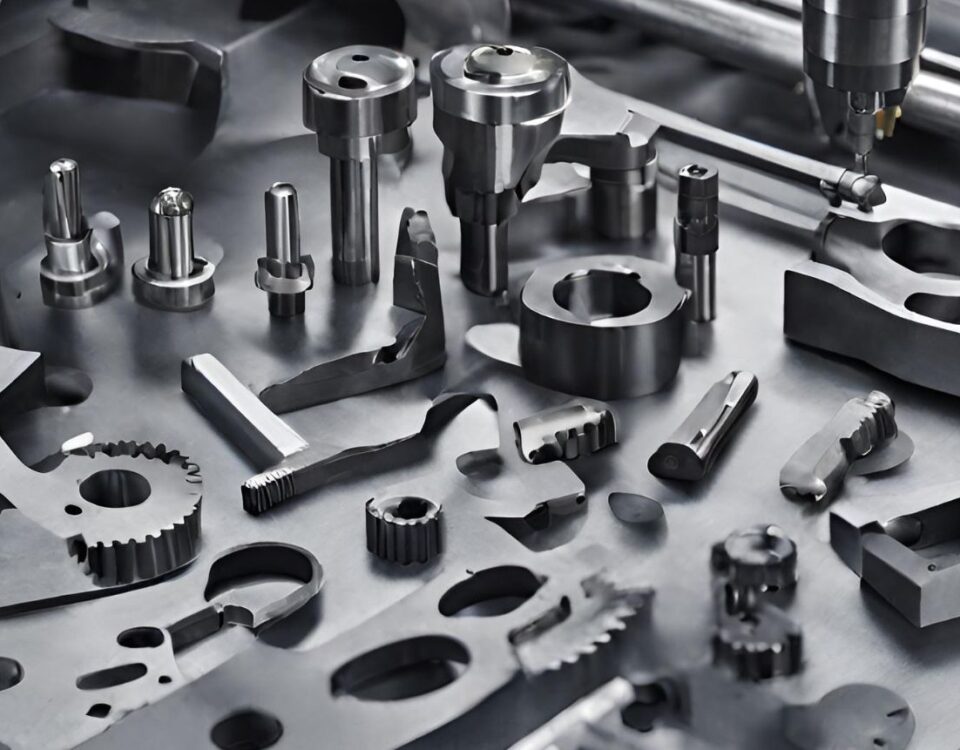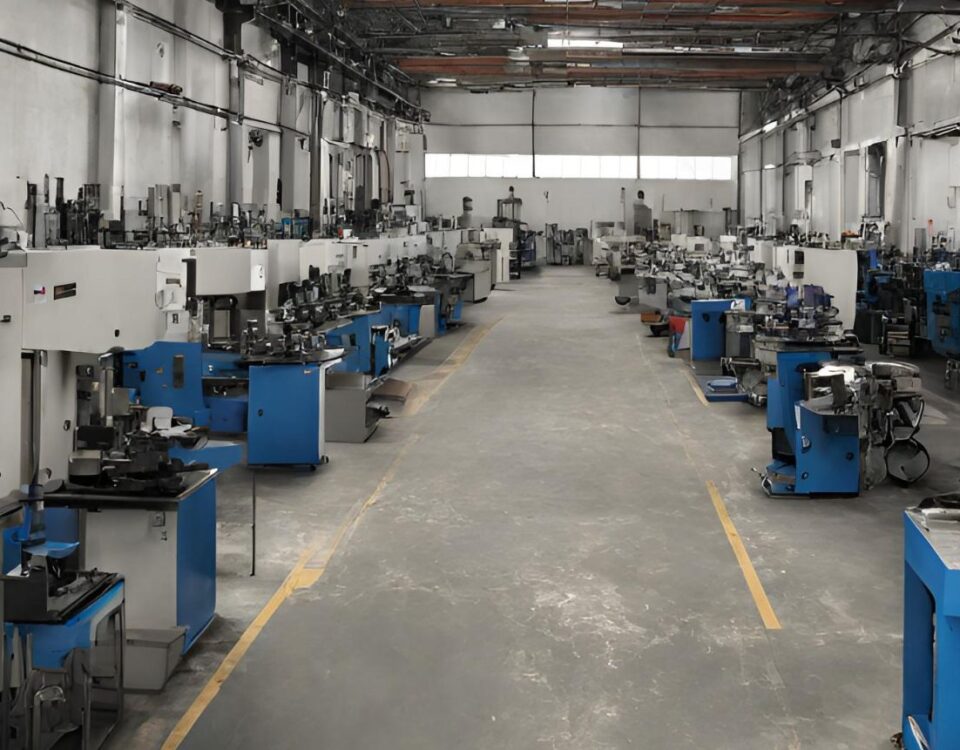
Definition and Categories of Casting
8 December 2023
Services for CNC Machining
14 December 2023What is CNC Machining?
CNC (Computer Numerical Control) machining is a manufacturing process that utilizes computerized controls and precise machinery to produce intricate and precise parts from various materials. It involves the use of computer-aided design (CAD) software to create a digital model of the part, which is then converted into instructions for the CNC machine.
The CNC machine follows these instructions to remove material from a raw workpiece, such as metal, plastic, wood, or composites, to create the desired shape and dimensions. The machine's movements are controlled by motors and actuators, allowing for high precision and repeatability.
CNC machining offers several advantages over traditional manual machining processes. It allows for complex and intricate designs to be accurately replicated, reduces human errors, increases production efficiency, and enables the production of parts with tight tolerances. It is widely used in various industries, including automotive, aerospace, electronics, medical, and prototyping, among others.
Different types of CNC machines are available, such as CNC mills, lathes, routers, and plasma cutters, each specialized for specific machining tasks. CNC machining has revolutionized the manufacturing industry by improving productivity, accuracy, and versatility in creating a wide range of components and products.
CNC Machining Service Types
A variety of machines that can mill, turn, drill, or use a combination of these operations are used by the best CNC machining services.
CNC Milling
CNC milling is a specific type of CNC machining process that involves the use of a milling machine controlled by a computer program. It is a subtractive manufacturing method where material is removed from a workpiece to create the desired shape and features. In CNC milling, the workpiece is securely held on a table or fixture, and a rotating cutting tool, typically with multiple cutting edges, is guided by computer-controlled movements to remove material. The cutting tool can move along multiple axes (usually three or more) to achieve precise and complex cuts. The computer program, often created using CAD (Computer-Aided Design) and CAM (Computer-Aided Manufacturing) software, provides the instructions for the milling machine to follow.
These instructions specify the tool paths, cutting speeds, depths, and other parameters necessary for the desired outcome. CNC milling is widely used in various industries, including automotive, aerospace, electronics, mold-making, and prototyping. It allows for the production of intricate parts with high precision and repeatability. The versatility of CNC milling machines enables the creation of a wide range of shapes, contours, holes, threads, and surface finishes. Overall, CNC milling has revolutionized the manufacturing industry, offering increased efficiency, accuracy, and flexibility compared to traditional milling methods. It enables the production of complex components and plays a crucial role in modern manufacturing processes.
CNC Turning or Lathing
CNC turning, also known as CNC lathing, is a machining process that involves the rotation of a workpiece while a cutting tool removes material to create the desired shape. It is commonly used for cylindrical or round-shaped parts. During CNC turning, the workpiece is held in a chuck and rotated at high speed. A single-point cutting tool, controlled by a computer program, is then brought into contact with the rotating workpiece to remove material and create the desired shape. The cutting tool can move along multiple axes, allowing for precise control over the dimensions and features of the part. The computer program, often created using CAD (Computer-Aided Design) and CAM (Computer-Aided Manufacturing) software, provides instructions for the CNC lathe to follow. These instructions include details about tool paths, cutting speeds, feed rates, and other parameters necessary for the machining process.
CNC turning is widely used in industries such as automotive, aerospace, medical, and general manufacturing. It is particularly suitable for producing parts with symmetrical or rotational features, such as shafts, pins, cylinders, and threaded components. The advantages of CNC turning include high precision, repeatability, and the ability to efficiently produce large quantities of parts. It also allows for the creation of complex shapes, such as contours, tapers, and grooves. In summary, CNC turning, or CNC lathing, is a machining process that utilizes a rotating workpiece and a cutting tool to remove material and create cylindrical or round-shaped parts with high precision and efficiency.
CNC Drilling
CNC drilling is a machining process that uses computer-controlled movements to create holes in a workpiece. It is a precise and efficient method of drilling holes with consistent accuracy and repeatability. In CNC drilling, the workpiece is securely held in place, typically on a table or fixture. A rotating drill bit, guided by the CNC machine, is brought into contact with the workpiece to remove material and create the desired hole. The drilling parameters, such as drill speed, feed rate, and depth, are programmed into the CNC machine to ensure accurate and efficient drilling. CNC drilling can be performed on various materials, including metals, plastics, woods, and composites. It is commonly used in industries such as automotive, aerospace, electronics, and construction, where precise and consistent hole drilling is required.
The computer program, often created using CAD (Computer-Aided Design) and CAM (Computer-Aided Manufacturing) software, provides instructions to the CNC machine on the position, size, and depth of the holes. This allows for the creation of complex hole patterns, such as arrays of holes or holes with specific angles and orientations. CNC drilling offers several advantages over manual drilling processes. It ensures precision and consistency in hole placement, size, and depth, resulting in improved product quality and reduced human error. It also enables the efficient drilling of multiple holes in a single setup, reducing production time and increasing productivity. Overall, CNC drilling is a versatile and efficient machining process that allows for accurate and repeatable hole creation in various materials. It plays a crucial role in many industries where precise hole drilling is required.
CNC Multi-Spindle Machining
CNC multi-spindle machining is a manufacturing process that involves using a computer numerical control (CNC) system to control multiple spindles simultaneously. This technique allows for the efficient and simultaneous machining of multiple parts, which can lead to increased productivity and reduced manufacturing time.
In CNC multi-spindle machining, a machine tool with multiple spindles is used. Each spindle is equipped with cutting tools and can perform various machining operations such as drilling, tapping, milling, and turning. The CNC system controls the movements of the machine tool and coordinates the operations of the multiple spindles.
Some advantages of CNC multi-spindle machining include:
1. Increased productivity: By machining multiple parts simultaneously, CNC multi-spindle machines can produce a larger volume of parts in a shorter period.
2. Reduced setup time: Once the machine is set up, the CNC system can automatically control the machining operations, eliminating the need for manual intervention and reducing setup time.
3. Improved accuracy: CNC systems ensure precise control over the machining process, resulting in consistent and accurate parts.
4. Cost-effective: The ability to machine multiple parts at once can lead to cost savings in terms of labor, machine time, and tooling costs.
CNC multi-spindle machining is commonly used in industries that require high-volume production of small to medium-sized parts, such as automotive, aerospace, and medical device manufacturing. It offers increased efficiency and cost-effectiveness compared to single-spindle machining methods.
Advantages of Services for CNC Machining
CNC machining services offer several benefits for various industries. Here are some key advantages:
1. Precision and accuracy: CNC (Computer Numerical Control) machines are highly precise and can consistently produce parts with tight tolerances. This level of accuracy is crucial for industries like aerospace, automotive, and medical, where precision is essential.
2. Versatility: CNC machines can perform a wide range of machining operations, including milling, turning, drilling, and grinding. This versatility allows for the production of complex parts with different geometries, making CNC machining suitable for various applications.
3. Efficiency and productivity: CNC machines are computer-controlled, which eliminates the need for manual intervention and reduces the risk of human error. This automation leads to increased productivity, faster production cycles, and reduced overall manufacturing time.
4. Repetitive and consistent results: CNC machines can replicate the same machining process repeatedly, ensuring consistent quality and reducing variability between parts. This is especially beneficial for mass production and assembly line operations.
5. Flexibility and customization: CNC machines can easily switch between different machining operations and accommodate design changes without the need for extensive retooling. This flexibility allows for quick adaptation to different production requirements and customization of parts.
6. Complex geometries and intricate designs: CNC machining can produce parts with complex shapes and intricate designs that are challenging to achieve with traditional machining methods. This enables the production of unique and innovative components.
7. Material options: CNC machines can work with a wide range of materials, including metals (such as aluminum, steel, titanium) and various plastics. This versatility makes CNC machining suitable for different industries and applications.
8. Waste reduction: CNC machining is a subtractive manufacturing process, meaning excess material is removed from the workpiece. This reduces material waste compared to other manufacturing methods, leading to cost savings and environmental benefits.
Overall, CNC machining services offer precision, versatility, efficiency, and customization, making them a preferred choice for many industries seeking high-quality and reliable production of parts and components.
Conclusion
In conclusion, CNC machining offers a wide array of services to cater to different manufacturing requirements. These services encompass CNC milling, turning, drilling, grinding, tapping, routing, laser cutting, waterjet cutting, EDM, and wire cutting. Each of these services provides precise, efficient, and versatile solutions for creating complex shapes, achieving tight tolerances, and producing high-quality parts. Whether it's creating prototypes, mass production, or custom components, CNC machining services offer the flexibility and accuracy needed to meet the demands of diverse industries. By leveraging these services, businesses can benefit from increased productivity, reduced lead times, and consistent quality in their manufacturing processes.




